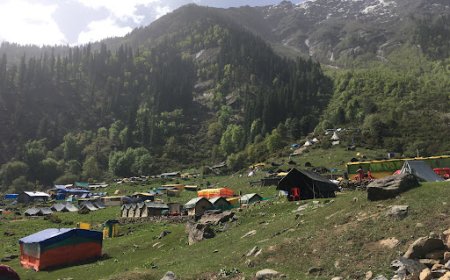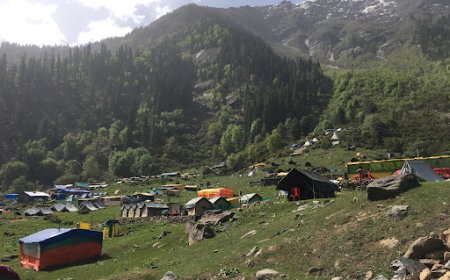When Is the Best Time To Visit Annapurna Base Camp Safely?
Discover the best times to safely trek Annapurna Base Camp, with expert tips on seasonal weather, trail conditions, altitude adjustment, and packing. Learn why spring and autumn offer ideal trekking weather and how to avoid monsoon and winter risks for a safer, unforgettable Himalayan adventure.
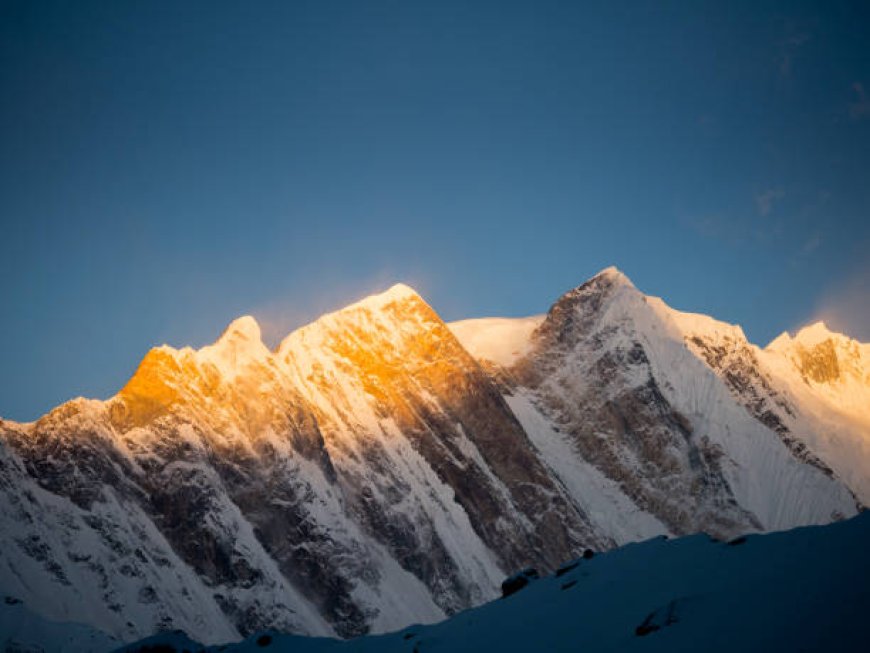
When Is the Best Time To Visit Annapurna Base Camp Safely?
Picking the right time to trek to Annapurna Base Camp (ABC) is important for both safety and fun. The best times to go are in the spring (March to May) and autumn (September to November).
In spring, the weather is usually nice with moderate temperatures. The trails are lined with blooming rhododendron trees, making the scenery pretty. Youll get great views of Annapurna, Machapuchare, and other peaks. It might be warm at lower altitudes, but the higher areas stay cool.
Autumn is often seen as the best time to trek to ABC. The rains have passed, so the air is clear, giving you amazing mountain views. The weather is dry and stable, and the trail conditions are great. Keep in mind that this is a popular time, so youll likely run into more trekkers along the way.
Avoid going during the monsoon (June to August) since it rains a lot, and conditions can get tricky with slippery trails and a higher chance of landslides. Winter (December to February) is quieter, but its pretty cold, and some paths might be blocked by snow, especially near Machapuchare Base Camp and ABC.
To have a safe and enjoyable trip to ABC, plan your hike for spring or autumn. Always check the weather beforehand, pack for different conditions, and allow extra time for acclimatization. Choosing the right season will help ensure you have a smoother trek with great views and fewer weather issues.
Understanding Annapurnas Seasonal Climate
Annapurnas weather changes a lot with the seasons, which affects trail conditions and trekking safety. The area has four main seasons: spring (MarchMay), monsoon (JuneJune-September), autumn (late SeptemberNovember), and winter (DecemberFebruary). Spring and autumn usually have the best weather, making them the ideal times for trekking. Monsoon brings heavy rain, leeches, and landslides that can make trails dangerous. Winter is quiet but very cold, with snow covering the upper trails. As you hike up, it gets colder fasthigher areas can be freezing even in spring. Knowing these weather changes helps you plan your gear, timing, and safe routes. Being aware of the weather can prevent problems like snow-blocked paths, floods, or low visibility, ensuring a safer and more enjoyable trek to Annapurna Base Camp.
Spring Trekking (March to May): Beauty in Bloom
Spring is one of the best times to trek to Annapurna Base Camp. From March to May, the trail is alive with bright rhododendron flowers, making the forests beautiful. Days are warm at lower levels, and the higher areas stay comfortably cool, which is great for trekking. Mornings usually have clear skies for amazing mountain views, though clouds can roll in during the afternoon. Some snow might still be on the ground near the base camp in March, adding to the beauty but not blocking paths. Wildlife is more active, and the villages feel lively as people prepare for the monsoon. Though its a busier season with more trekkers, the stunning flowers, nice temperatures, and clear views make spring an excellent choice for a safe and lovely trip.
Autumn Trekking (Late September to November): Crisp and Clear
Autumn is often seen as the best time to hike to Annapurna Base Camp. From late September to November, the skies are crystal clear, allowing for stunning views of the snowy Himalayas. The monsoon rains have settled the dust, creating lush and refreshed trails. Its comfortable during the day and cool at night, making trekking easy. Trails are dry and stable, which helps prevent slips and landslides. This time also coincides with big Nepali festivals like Dashain and Tihar, adding rich cultural experiences in the villages along the way. The only downside is the crowdsits the busiest season, so lodges can fill up fast. Still, for fresh air, stunning views, and great weather, autumn is hard to beat for a memorable trek.
Why Monsoon Season (June to Mid-September) Is Risky
Hiking to Annapurna Base Camp during the monsoon season (June to mid-September) can be risky and challenging. Heavy rains can make trails muddy and slippery, especially in forested areas and along cliffs. Leeches thrive in wet environments, which can be annoying for trekkers at lower altitudes. Visibility often dips due to fog and clouds that block mountain views, which are a big reason for trekking. Flash floods can damage trails and footbridges, leading to reroutes or cancellations. Delays for flights to Pokhara are common, too. While the environment is lush and less crowded, the safety concerns usually outweigh the benefits. Unless youre highly experienced and ready for wet conditions, its best to skip the monsoon for a safe trek.
Challenges of Winter Treks (December to February)
Winter treks to Annapurna Base Campfrom December to Februaryoffer quiet trails but some serious challenges. Temperatures can drop below -10C (14F) at higher elevations, especially during the night. Snow and ice can make sections near Deurali, MBC, and ABC slippery or impossible, raising the risk of falls or delays. Fewer teahouses stay open in the higher areas, so finding places to stay and eat can be tough. Shorter days mean less time to trek safely, and without the right gear, hypothermia can be a real risk. Still, winter has clear skies and beautiful snow-covered views, so experienced trekkers who enjoy solitude might appreciate it. Just make sure youre prepared and have expert support if you choose to trek in winter.
Comparing Crowds, Costs, and Conditions by Season
Each season on the ABC trek has a different mix of crowds, costs, and trail conditions. Autumn draws the most people, offering great views and weather, but higher prices and crowded teahouses. Spring has a slightly smaller crowd with similar trail conditions and blooming scenery, but it still features peak-season rates. Winter is the cheapest option with the fewest tourists, but expect cold, icy trails and limited places to stay. Monsoon has the fewest trekkers and may offer some discounts, but poor visibility and risky conditions make it less attractive. Your choice will depend on what youre looking for: if you want views and comfort, go in autumn; for natural beauty and mild weather, spring is best; if youre on a budget and can handle the cold, consider winter. Balancing these factors helps ensure a trek that fits your needs.
Wildlife and Flora Highlights by Time of Year
The ABC trek showcases a variety of wildlife and plants, changing with each season. In spring, rhododendrons, the national flower of Nepal, bloom in bright reds and pinks around places like Ghorepani and Chhomrong. Birds such as the Himalayan monal (Danphe) are more active, and clear skies make it easier to spot animals. In autumn, the plants thrive after the monsoon, supporting various bird species while the forests stay dense and green. Monsoon causes rapid plant growth, but leeches and overgrown trails can make trekking tough. In winter, theres less plant life and wildlife, but the quiet forest offers a peaceful experience with nature. For nature lovers, spring tends to provide the best mix of colorful plants and wildlife activity, enhancing the trek beyond just mountain views.
Gear Adjustments Based on the Season
Your gear needs to match the season for a safe and comfortable trek on the ABC trail. In spring and autumn, pack light layers, a waterproof jacket, sun protection, and warm clothing for nighttime. Shoes should be waterproof with a good grip for wet or uneven trails. In winter, youll need heavier layers, insulated boots, crampons or microspikes, and warm gloves to deal with snow and freezing temperatures. A good sleeping bag rated for -10C or below is a must. During monsoon, prioritize rain gear like ponchos, pack covers, quick-dry clothes, and leech socks. Waterproof bags for your electronics and important documents are essential. Always include trekking poles, a headlamp, and a reusable water bottle or purifier. Adjusting your gear helps keep you comfortable and safe.
Festival Seasons and Cultural Highlights on the Trail
Trekking during Nepali festivals can add a lot to your ABC experience. In autumn, festivals like Dashain (which celebrates the victory of good over evil) and Tihar (the festival of lights) create a joyful atmosphere in the villages. Homes are decorated with colorful lights and flowers, and locals might invite you to enjoy traditional meals or ceremonies. In spring, you might catch Holi, the festival of colors, celebrated in the lower villages, which lets you experience some of the local culture. Trekking during these festivals can be enriching, but it might also affect where you can stay and eat because of the celebrations. Its a good idea to be respectful, dress modestly, and join in if invited. These experiences can deepen your connection with the local people and culture, making your trek more than just a hike, but a celebration of Nepali life.
Final Tips for Picking Your Ideal Trekking Window
Choosing when to trek to Annapurna Base Camp depends on your goals, fitness level, and weather tolerance. If you want clear skies, vibrant scenery, and stable conditions, aim for autumn (late SeptemberNovember) or spring (MarchMay). Avoid the monsoon unless youre ready for wet conditions and limited views. Winter is good for experienced trekkers looking for peace and snow-capped views, but it needs serious cold-weather prep. Be sure to book early during peak seasons and keep festival dates in mind for a richer cultural experience. Always add some flexibility for weather delays or acclimatization. Checking current weather forecasts, packing the right gear for the season, and hiring a licensed guide are important for staying safe. With proper timing and planning, youll not only enjoy the trek but also embrace the true spirit of the Annapurna region.
Which month is best for the Annapurna Base Camp trek?
The ideal months for the Annapurna Base Camp (ABC) trek are October and November, with March and April being good alternatives. These months usually have stable weather, clear skies, and great trail conditions. October is particularly popular because of the clear views after the monsoon and the lively cultural festivals happening in Nepal.
What is the best weather for Annapurna Base Camp?
The best weather for the ABC trek is typically dry and mild, found during the autumn (SeptemberNovember) and spring (MarchMay). During these times, daytime temperatures are comfy (around 1020C at mid-altitudes), the skies are mostly clear, and there's little chance of rain or snow on the trails.
What is the best time of year to do the Annapurna Circuit?
The best time to tackle the Annapurna Circuit is from October to early November for nice weather and clear views. Mid-March to early May is also a great choice, with blooming rhododendrons and warmer days. It's best to steer clear of the monsoon (Junemid-September) and deep winter (late DecemberFebruary) because of possible hazards on the trails and cold temperatures.
Is it safe to go to Annapurna Base Camp?
Yes, it's generally safe to trek to Annapurna Base Camp if you go during the right season, stick with a licensed Annapurna Base Camp Trek Guide, and take precautions for altitude sickness and sudden weather changes. Staying on marked trails, keeping an eye on your health, and using the right gear can help keep you safe.






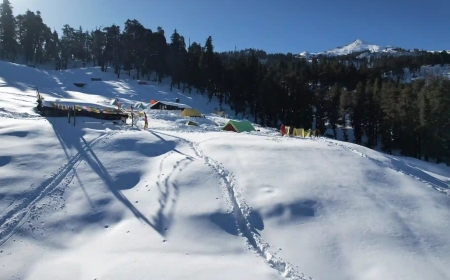
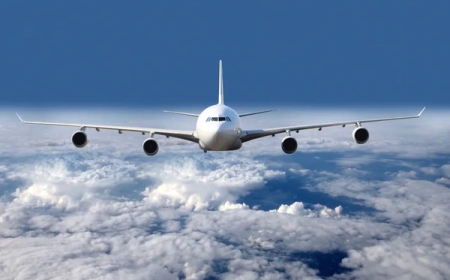
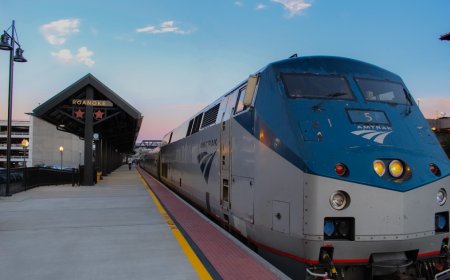







![Top 9 Real Estate Mobile App Developers in Riyadh, Saudi Arabia [2025 Edition]](https://www.biphoo.uk/uploads/images/202507/image_430x256_6879d0d524335.jpg)












